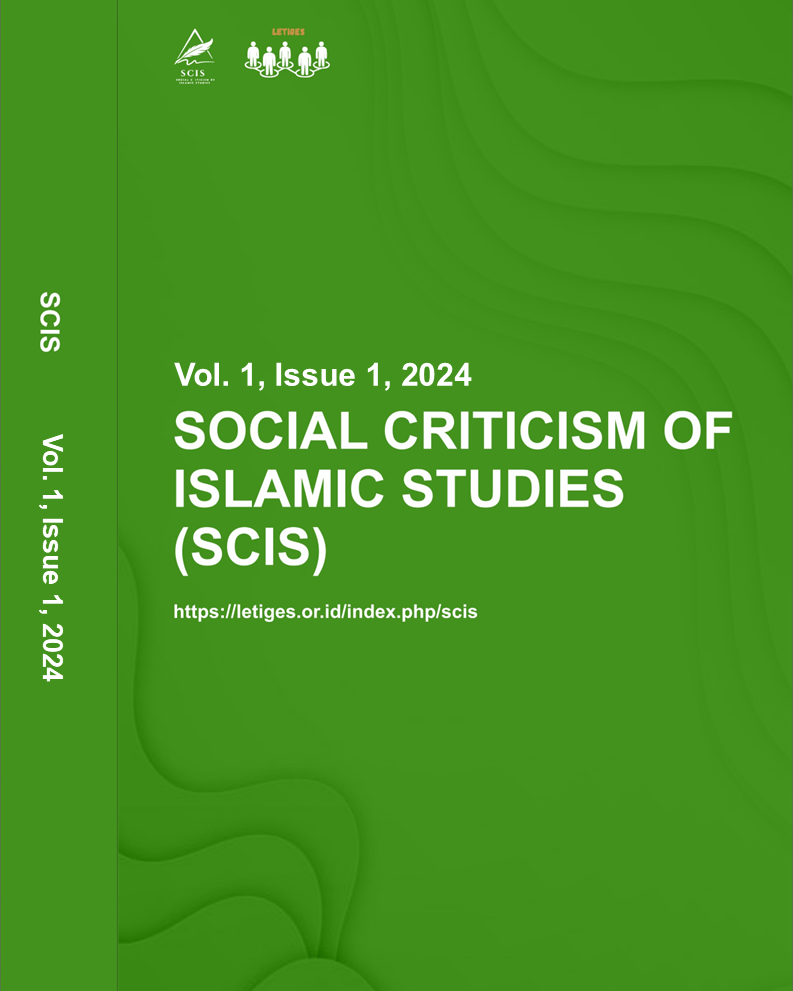Quranic Borrowings in the Maqams by Al-Zamakhshari and Their Functional Load
DOI:
https://doi.org/10.35723/scis.v1i1.5Keywords:
Rhetoric, Semantic load, Stable associations, Intertextuality of connections, Moral commandmentsAbstract
This article examines Qur'ānic motifs and imagery in the works of Abul-Qasim Mahmud al-Zamakhshari, a renowned philologist, writer, and philosopher from medieval Khwarezm. This study aims to analyze the influence of the Qur'ān on al-Zamakhshari's literary works, focusing on the use of Qur'ānic reminiscences and imagery with diverse meanings. Al-Zamakhshari is known as a brilliant Qur'ānic scholar and commentator through his monumental work Al-Kashshaf, in which he not only reviews the Muslim holy book from the aspect of religious teachings but also as a philologist. He was one of the early figures who paid deep attention to the stylistic beauty, lexical richness, rhetoric, and aesthetics of Qur'anic expression. This study uses a qualitative approach with text analysis to reveal the philological and aesthetic contribution of the Qur'an to al-Zamakhshari's literary legacy. The results show that Qur'ānic imagery plays an important role in his literary works, both as a form of respect for the sacred text and as a medium to convey broader meanings. This conclusion confirms that the integration of Qur'ānic elements in literary works reflects al-Zamakhshari's intelligence and deep insight as a philologist and writer.
References
Aziz, A. W. (2023). Al-Dakhil in Al-Zamakhshari’s Tafsir al-Kasysyaf. 8(1), 29–49. https://doi.org/10.24090/maghza.v8i1.6675
Bogdan, R. C., & Biklen, S. K. (1982). Qualitative Research for Education: An Introduction to Theory and Methode.
Creswell, J. W. (2019). Research Design and Mixed Methods Quantitative. Qualitative, Approaches. Awkward Dominion, 381–382. https://doi.org/10.7591/9781501721144-016
Garvey, B. J. (2020). The Doors of Melody : The Iraqi Maqām as a Tradition of Process. Project Muse’, 51(1), 59–93. https://doi.org/10.1353/amu.2020.0003
Ichwan, M. N., Ulama’i, A. H. A., Masuwd, M. A., & Abdulghani, N. A. (2024). Sufism and Quranic Interpretation: Bridging Spirituality, Culture, and Political Discourse in Muslim Societies. Ulumuna, 28(2), 655–680. https://doi.org/10.20414/ujis.v28i2.1082
Jar Allah al-Zamakhshari, A.-M. (2008). The science of usul ad-din. Introduction and editorial by Sabine Schmidke. Arab Science Publishing House.
Khodjaeva. (2000). Al-Muntahab fi tafsir al-Quran al-Karim; Interpretation of the Holy Quran in Arabic and Russian.
Mahmud, M. A. (2023). Resepsi Az-Zamakhsyarī atas Wacana Teologis Muktazilah: Bias al- Uṣūl al-Khamsah dalam Tafsir al-Kasysyāf. Contemporary Quran, 3, 2–9. https://doi.org/10.14421/cq.v3i2.5667
Miftakhul Rahma, R. (2014). Amtsāl Al-Qur’ān According to Zamakhshari in his Tafsir Al-Kasyāf.
Sher’Ali., M. (2021). The Holy Qur’an. Arabic text and English translation. Islam International Publications Limited.
Umar, Z. A. al-Q. M. ibn. (1982). مقامات الزمخشرى، دار الكتاب العلمى،بيروت،.
Ауэзова, З. А. М. (1993). Особенности развития жанра макамы в арабской литературе, XI-XIII вв.
Макамы., С. Т. Д. М. З. и его. (2019). Журнал «Молодой ученый».Правда, М. (1981). ПушкинА. С. Подражания Корану. Собрание сочинений в 10 томах.
شفيعة., ل. (2012). التأويل في شرح مقامات الزمخشري ليوسف بقاعي (Doctoral dissertation, تيزي وزو).
Downloads
Published
How to Cite
Issue
Section
License
Copyright (c) 2024 Rano Khodjaeva

This work is licensed under a Creative Commons Attribution 4.0 International License.








